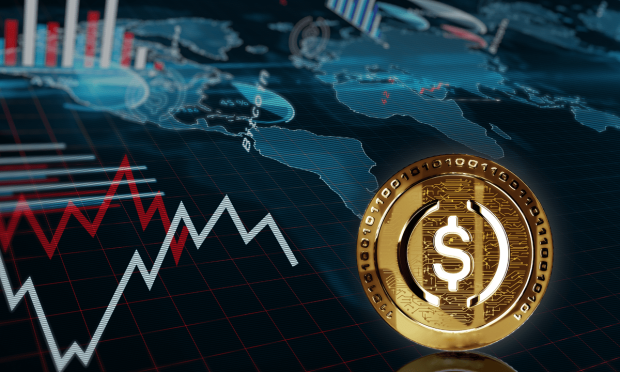A Primer on Asia-Pacific Stablecoin Regulations

Stablecoin regulations vary widely in the Asia-Pacific region, ranging from Japan’s requirement that they get issued by banks to Thailand’s outright ban on crypto payments of any kind.
But they all share one thing: The debate has been heavily influenced by the $48 billion collapse of the Terra/LUNA stablecoin ecosystem in May, which largely lit a fire under the process, much as it did in the United States and the EU.
Read more: A Primer on US Stablecoin Regulations
Read more: A Primer on EU Stablecoin Regulations
Here’s a look at some of the regulatory regimes in place and being discussed in the region:
Australia
In April, the Australian Prudential Regulation Authority (APRA) published a policy roadmap for cryptocurrencies that includes regulation of “payments stablecoins.” It doesn’t foresee finalized rules in place until 2025.
Stablecoins “bear similarities with stored-value facilities (SVFs) and APRA, in conjunction with peer agencies on the Council of Financial Regulators (CFR), is developing options for incorporating them into the proposed regulatory framework for SVFs,” it said. Consultations on “prudential requirements for large SVFs” with the Bank for International Settlement, among others, will take place in 2023.
Principles include making the rules technology-neutral, principles-based and fitting into a whole-of-system regulatory approach, APRA Chair Wayne Byers said in a speech in April. In May, he suggested that while more regulation is needed, it didn’t make sense to have banking regulators oversee them, as most are created by non-banks, the Australian Financial Review (AFR) reported.
In March, Reuters reported that Australia and New Zealand Banking Group (ANZ) minted a test run of 30 million Australian dollar stablecoins, called A$DC, which was transferred to a private company and then redeemed.
SVF proposals include:
- Transferring SVF regulatory control from the Reserve Bank of Australia to the Australian Securities and Investments Commission (ASIC), which will issue Australian Financial Services (AFS) licenses.
- Small SVFs and other payments products with limited risk to consumers are largely exempt
In May, AFR said that Reserve Bank of Australia Deputy Governor Michele Bullock said in a speech that while stablecoins “are not big enough at the moment to cause financial stability issues,” following the Terra/LUNA collapse it’s clear that “stablecoins are not so stable anymore” and “everyone is nervous about the implications, particularly for consumers.”
She urged the government to widen definitions in payments legislation to give the RBA a role in regulating new companies entering the stablecoin space.
In July, RBA Governor Philip Lowe said stablecoins should be regulated like bank deposits, AFR said.
“My view is if these tokens are going to be used more widely by the community, they are going to need to be backed by the state or be prudentially regulated, just like we regulate bank deposits,” he said. “We regulate private money in banks. We should ultimately regulate private money that is a stablecoin that sits in our digital wallets as well.”
Japan
In June, Japan passed a stablecoin law prepared largely by the Financial Services Agency (FSA) that defined them as digital money.
The requirements:
- They must be pegged to the yen or another fiat currency.
- Holders have a legal right to redeem them at face value.
- Effectively, they “can only be issued by licensed banks, registered money transfer agents and trust companies,” Bloomberg reported.
- Existing stablecoins including Tether’s USDT and Circle’s USDC are not covered by the law. Nor are algorithmic stablecoins like the collapsed Terra/LUNA. However, CoinDesk noted, Japanese exchanges do not currently list stablecoins.
Singapore
The Monetary Authority of Singapore (MAS) Currently regulates stablecoins under the Payments Services Act (PSA), which primarily deals with anti-money-laundering (AML) and countering the financing or terrorism (CFT) controls, Tharman Shanmugaratnam, the minister in charge of MAS, said in parliamentary hearings on Aug. 1.
Read more: Today in Crypto: Singapore’s Central Bank Weighs Stablecoin Regulations in Wake of TerraUSD Collapse
It classifies fiat-backed stablecoins as different from “e-money.” Rather these and non-fiat-backed algorithmic stablecoins like the collapsed Terra/LUNA are “digital payment tokens” (DPT). Requirements include risk disclosure requirements. Three Arrows Capital, the hedge fund that collapsed due to the Terra/LUNA failure, forcing a number of crypto lenders into bankruptcy, was based in Singapore, which has brought attention to stablecoin and crypto regulation generally.
See also: How a Stablecoin’s $48B Collapse Rippled Across Crypto
“MAS is assessing the merits of a regulatory regime tailored to the specific characteristics and risks of stablecoins, such as regulating the reserve requirements and the stability of the peg, and will consult the public in the coming months,” Shanmugaratnam said. The $48 billion Terra/LUNA failure “illustrates the high risks involved in investments in cryptocurrencies that MAS has warned the public about repeatedly,” he said.
In March, the MAS told parliament:
- Under the PSA, fiat-pegged stablecoins are not eMoney if the exchange rate may vary when traded by third parties or the holder of the stablecoin does not need to have a contractual relationship with its issuer. The same applies to stablecoin back by a basket of fiat or other things like commodities
- These currently require risk disclosures.
- Like all crypto firms, stablecoin issuers are subject to a “robust licensing process” and a risk-based supervision regime. Supervisory resources are being increased.
South Korea
While details are as yet unclear, a leaked document revealed that the country is working on a Digital Assets Basic Act (DABA) to come into effect in 2024. It will focus on “non-security tokens,” ZDNet Korea reported on Aug. 18.
“Only the big frame of strengthening the regulation of stablecoins has been decided,” said Financial Supervisory Service chief Lee Bok-hyeon.
He added that the country was working with other national authorities and organizations to ensure that regulation is consistent across international lines.
More broadly, a new Digital Assets Committee is being launched to oversee crypto exchanges. It will be responsible for enforcing investor protections before DABA goes into effect, Decrypt noted.
Thailand
In March 2021, Pruettipong Srimachand, assistant governor of the Bank of Thailand warned that Bhat-pegged stablecoins are illegal, saying they “could cause fragmentation to the Thai currency system should … stablecoins come to replace, substitute or compete with Baht issued by the BOT.”
On March 22 of this year, Thailand joined a number of other countries including India, Indonesia and Turkey, in banning the use of cryptocurrencies of any kind for payments.
See also: Ban in Thailand Adds to Growing Backlash Against Crypto Payments
For all PYMNTS Crypto coverage, subscribe to the daily Crypto Newsletter.
